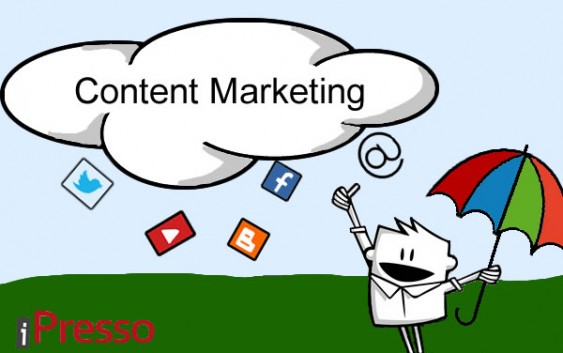What should a marketing strategy include?

Planning marketing activities is crucial to success – as long as, of course, the company wants to advertise (and almost all do). Regardless of the size of the business, you need to constantly adapt to changing market trends, technology and customer preferences. What should be included in a marketing strategy?
Analyze the external and internal environment
Before assessing the environment, start with yourself. Analyze your company’s resources – not only human capital and employee skills, but also the state of your finances and technological infrastructure. When creating a marketing strategy, you need to know already at this stage whether the current marketing team can handle the new responsibilities. And we’re not talking about a lack of knowledge or willingness to work, but simply time capabilities.
For example: in the new strategy you want more activity on Social Media. Make sure your graphic designers have the capacity to do a lot of new creations in a short period of time.
Example two: you see – as most do – potential in YouTube. The best platform for generating large reach and building brand recognition. But again, do you have people in marketing who know how to edit videos? Are they able to shoot and glue together some footage right away? Do they have the tools to do so?
The second thing is to analyze the external environment. Checking how the competition is doing, what are the trends in the market, at least trying to guess what will happen in the near future. A marketing strategy is created for a certain period of time – a year, for example – but that doesn’t mean it is a rigid dogma. It can and should be constantly refined, just as you need to constantly observe trends in the market. If your competitors adapt to them faster than you, you will be on the losing end.
Determine your marketing goals
If you don’t have goals, you won’t measure the effectiveness of your activities. According to the SMART method, goals should be: specific, measurable, achievable, relevant and timely.
Concretized – because overly general goals generally don’t work. However, it is worth specifying exactly what you want to achieve. It is best to answer the questions: who needs to be involved in the project? What will need to be achieved? What obstacles might be encountered along the way? Why are we setting this goal at all?
Measurable – because you need to set criteria to assess whether the goal has been met. We advise you to divide the whole goal into smaller stages and set a milestone at the end of each of them. It will be easier to control whether the whole project is moving in the right direction.
Achievable – it’s good to be ambitious, but if you want to achieve something, achieving is the key word. Put together the time, cost, human resources and consider whether the goal you are setting is really realistic. In marketing, there are plenty of cases of goals that looked beautiful in presentations, but in reality were just wishful thinking already at the intention stage. It’s just that, as in life, sometimes you have to realize that not everything can come out for us right away.
Important – the market is so dynamic that there is no point in wasting time and resources on goals that can be proven, but have little impact on your business. It is better to specify from the beginning which task in the marketing strategy will give real value to the organization and justify its implementation. Have a broad perspective: just because a goal seems sensible from a marketing perspective, doesn’t mean that looking at the big picture it will be profitable and reasonable for the company.
Identify target customer groups and segment them
If you don’t know who your product is for, you don’t know how to advertise it. You can run generic campaigns, but that’s a waste of money and time. The more you know about your potential customers, the better offer – advertising and product – you will prepare for them. That’s why prior research and creating a buyer persona is a must when planning your marketing strategy.
Even if you run a vegetable store where representatives of almost every possible target group buy, it’s worth segmenting your customers – after all, some prefer carrots, others celery. As your customer base grows and new segments emerge, it’s worth using marketing automation to streamline some processes and prepare more personalized communications for specific customer segments. It has been known for a long time that customers respond better to communications that are tailored to their expectations. Marketing Automation makes this possible by collecting data on the activities of your website users and, based on this, targeting specific product offerings to given segments.
Competitor research
Something that should be done practically constantly, because competitors never sleep and, like your company, conduct intensive marketing activities. This applies to virtually all industries.
Competitor analysis is an indispensable strategic management tool. Organizations able to reliably (and objectively) assess their competitive environment have a much better chance of successfully and nimbly adapting to ever-changing market conditions.
The primary goal of competitive analysis is to gain a complete picture of the companies that operate in your industry. Focus primarily on identifying your competitors’ strengths and weaknesses. Try to understand their strategy, cost structure (if you have such data), see if they have products with unique features, observe how they adapt to changes in the market.
Remember that competitors are not only your current direct rivals, but also companies that are promising and could become a formidable opponent in a few years. Porter’s five forces analysis is helpful in the competitive screening process – it’s an assessment of potential threats from suppliers, buyers, new competitors and the degree of rivalry in an industry.
Brand positioning
Brand positioning is not just about creating a cool logo and a catchy advertising slogan. It’s a comprehensive process, involving both market awareness and customer psychology: how a company wants to be perceived by consumers compared to its competitors. Brand positioning is all about standing out.
Your company has some values and goals – even if not written down anywhere. Just answer the questions: what message do you want to convey to customers? What values are key to you? This is important because it allows you to move to the next step, which was mentioned above. Identifying and understanding your target audience. Knowing who they are, you will know who among these customers will best respond to the values and goals of your business, in other words, trust the company and be a loyal buyer of its products.
Brand positioning is an ongoing process that requires monitoring market changes, responding to customer feedback and adapting to new trends. Companies that effectively position their brands gain not only customer loyalty, but also the ability to achieve a competitive advantage in a difficult market.
Choosing communication channels
You already know what kind of campaign and who you want to target. Based on your knowledge of your customers, you can choose which communication channel will pay off the most.
If most of your customers are sitting on Facebook – intensify activities on this platform at the expense of others. If you operate in the beauty industry – you know that your marketing eldorado is Instagram.
However, it is better to diversify your communication channels. Relying heavily on only one channel can end up uninteresting – because what will you do, for example, if for some reason your Facebook account is blocked, and there have been such cases?
Also, direct communication with customers who are already in your base should be done through at least several channels. You can, of course, choose the one that promises the best, but it is worth supplementing it with additional ones, such as an SMS call – mailing can save many abandoned shopping carts in an online store.
When it comes to communication channels, Marketing Automation is the solution to (almost) all problems – in the iPresso system you will find a lot of channels to choose from. From classic mailing, to on-page notifications, to SMS and WhatsApp. A transparent reporting system will tell you which communication channel is working. It’s worth checking it out in the free trial account.
Summary
The life of a marketing strategy does not end with the CEO’s acceptance. Analyze, analyze, analyze again. Keep checking in with your milestones. Identify the errors you encounter – because no strategy is perfect and virtually every strategy changes along the way – and react, correct. And remember that Marketing Automation can help with that.






